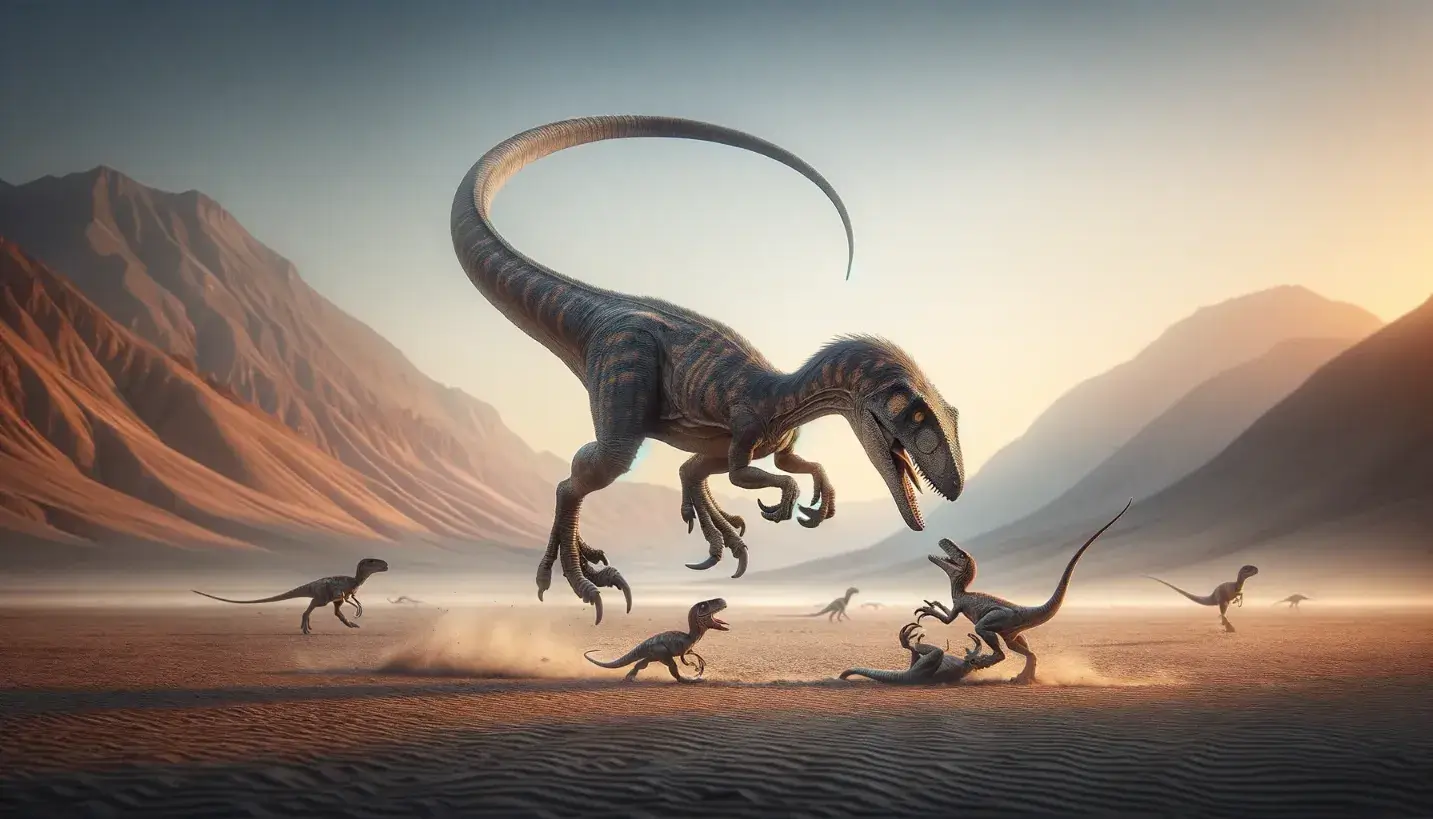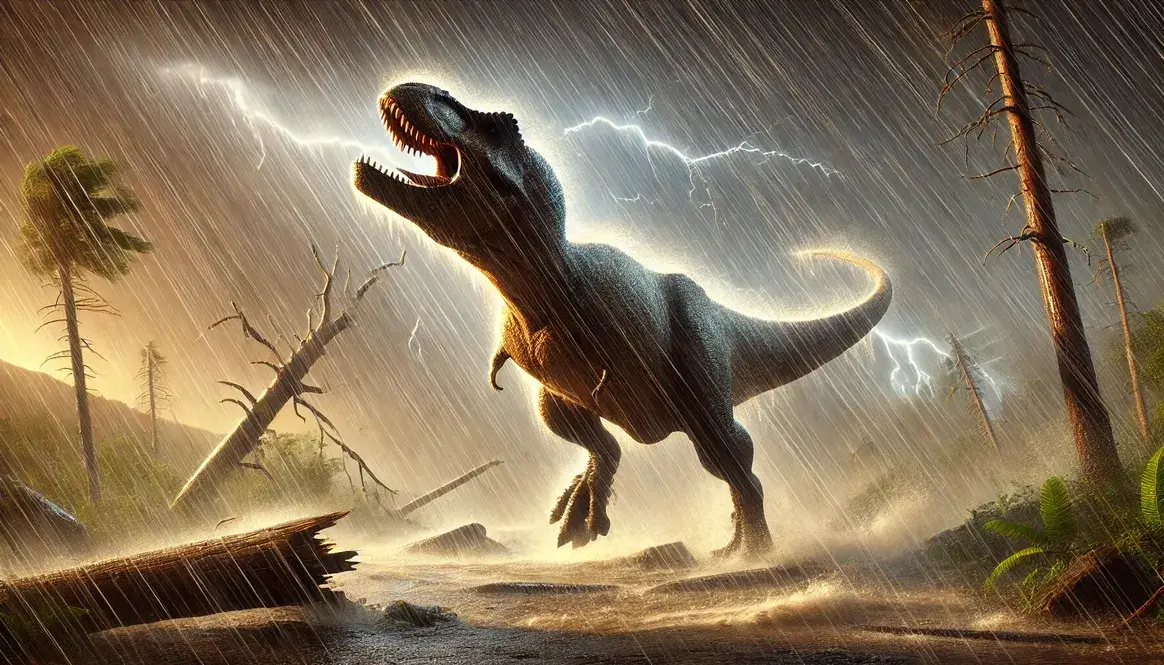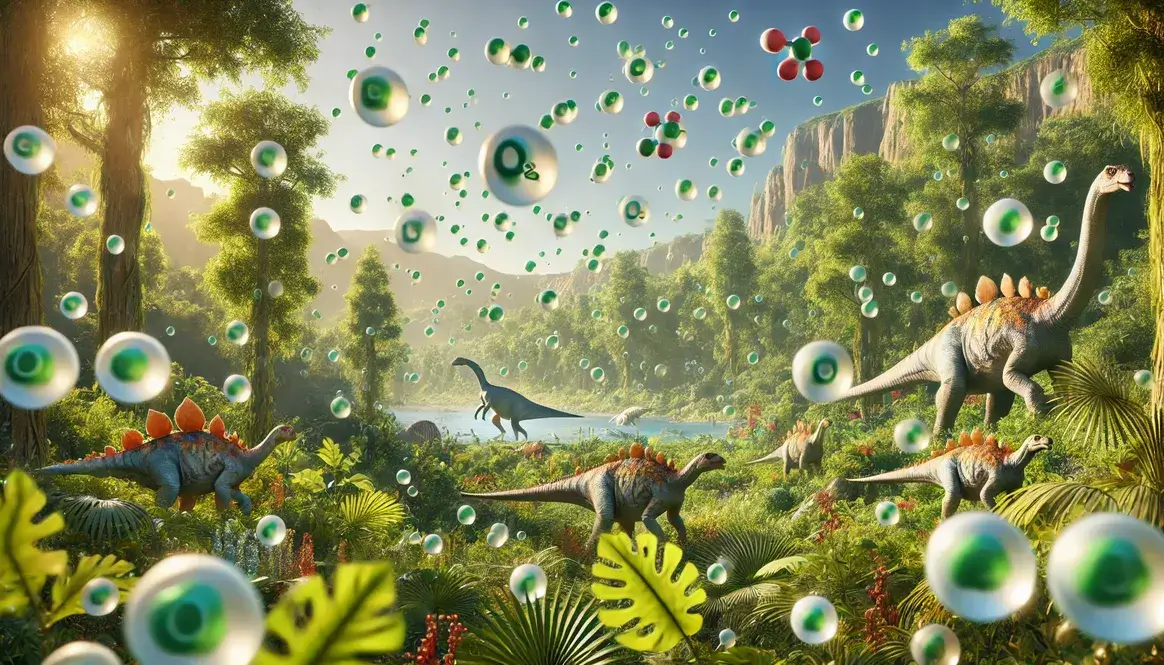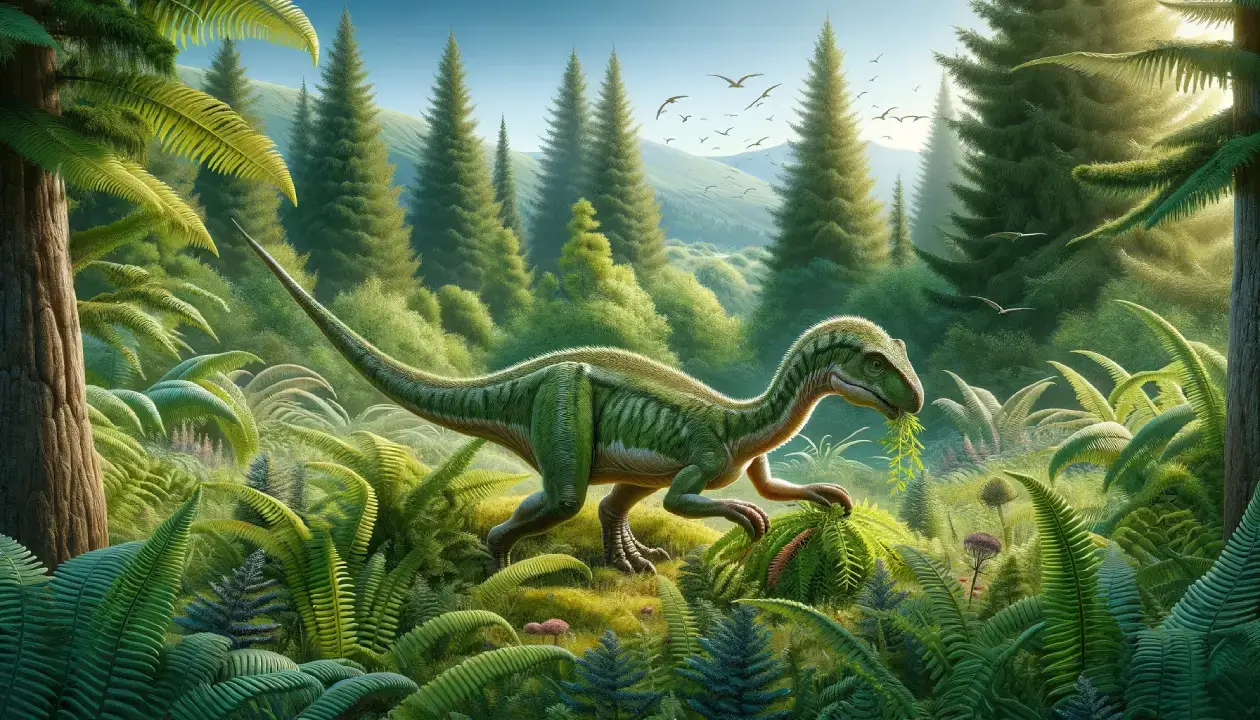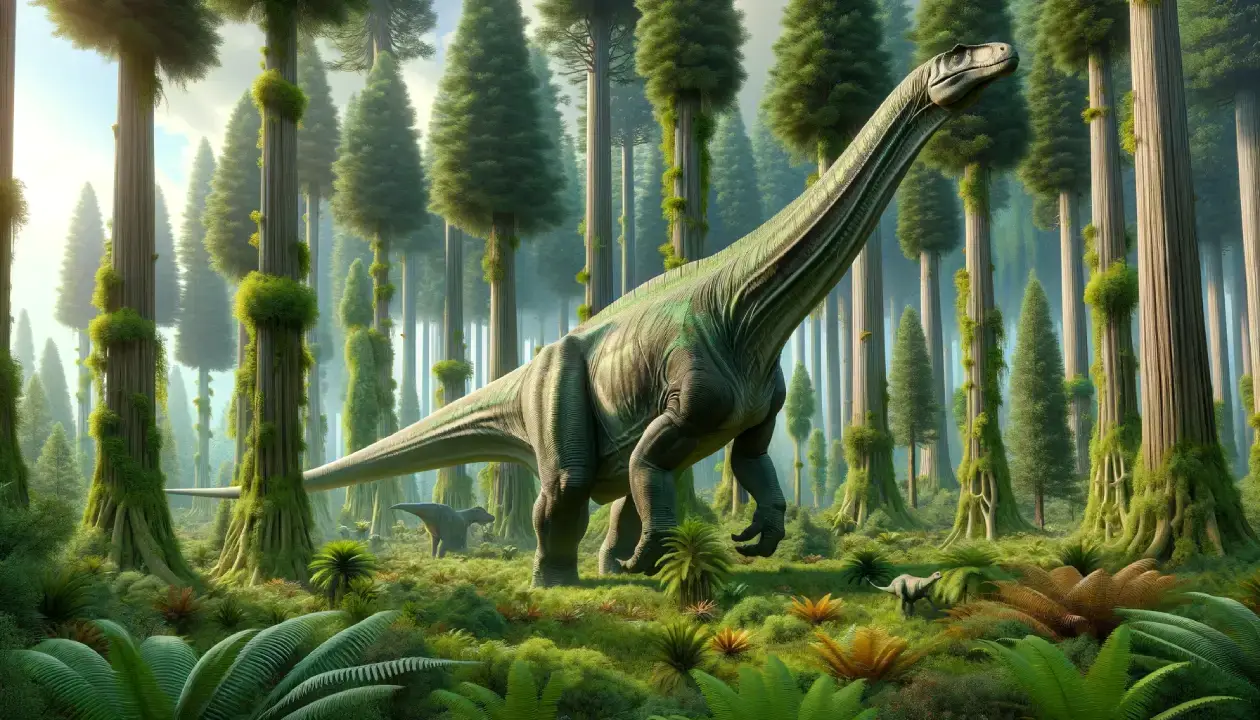Velociraptor was a small, feathered dinosaur that lived in Asia during the Late Cretaceous period. It was a fast and agile predator that used its sharp teeth and claws to hunt down its prey. Velociraptor is one of the most famous dinosaurs, thanks to its appearance in the Jurassic Park movies, but it was very different from the way it was portrayed on the screen.
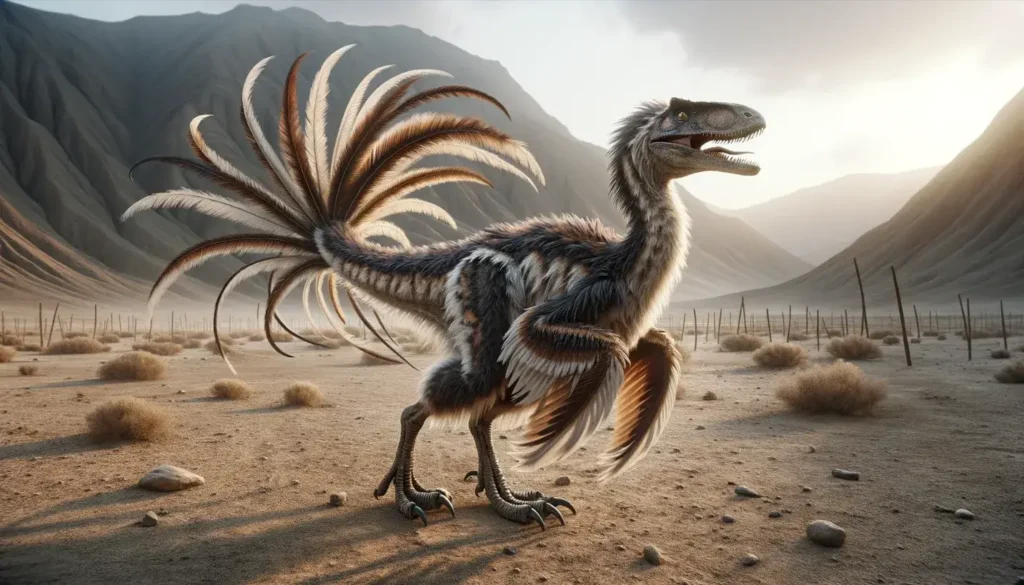
Basic Information
| Feature | Details |
|---|---|
| Time Period | Late Cretaceous (75-71 million years ago) |
| Diet | Carnivore |
| Length | 1.5-2.07 m (4.9-6.8 ft) |
| Weight | 14.1-19.7 kg (31-43 lb) |
| Size | Small |
| Posture | Bipedal |
| Locations | Mongolia, China |
| Continent | Asia |
| Type | Theropod |
| Habitats | Desert, Grasslands |
Description of Velociraptor
Historical Context
Velociraptor was first discovered in 1923 by Peter Kaisen, a member of an American Museum of Natural History expedition to Mongolia. He found a skull and a claw that were later described by Henry Fairfield Osborn, who named the new genus Velociraptor, meaning “swift thief”. Since then, more than a dozen specimens of Velociraptor have been found, mostly in the Djadochta and Bayan Mandahu formations of Mongolia and China. One of the most famous fossils is the “Fighting Dinosaurs”, which shows a Velociraptor locked in combat with a Protoceratops, a horned herbivore.
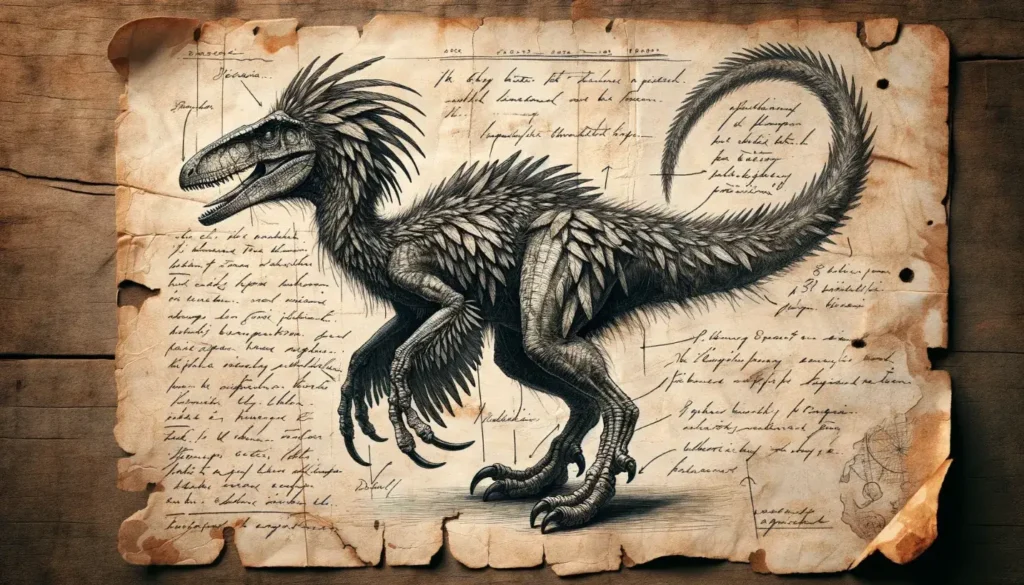
Physical Attributes
Velociraptor was a small but fierce dinosaur, with a long and low skull, an upturned snout, and large eyes. It had about 26 to 28 teeth in each jaw, which were curved and serrated for slicing flesh. It had a long and stiff tail that helped it balance and steer while running. It had short arms with three-fingered hands that had sharp claws for grasping and slashing. The most distinctive feature of Velociraptor was its enlarged second toe claw on each foot, which was about 6.5 cm (2.6 in) long and shaped like a sickle. This claw was held off the ground and used as a weapon to stab and slash its prey.
Velociraptor was also covered with feathers, as evidenced by the presence of quill knobs on its bones. The feathers were probably used for insulation, display, or maneuvering while running. The color and pattern of the feathers are unknown, but they may have been dull or bright depending on the environment and behavior of Velociraptor.
Feeding Habits
Velociraptor was a carnivore that hunted small to medium-sized animals, such as lizards, mammals, birds, and other dinosaurs. It may have hunted alone or in small groups, using its speed and agility to chase and ambush its prey. It may have also scavenged carcasses when available. Velociraptor used its teeth and claws to kill and dismember its prey, biting into the neck or throat to cause blood loss or suffocation. It may have also used its sickle claw to pierce vital organs or arteries.
Unique Features
One of the most unique features of Velociraptor was its close relationship to birds. Velociraptor belonged to a group of dinosaurs called dromaeosaurids, which were part of the larger group of maniraptorans, which also included birds. Velociraptor shared many features with birds, such as feathers, wishbones, hinged ankles, swivel wrists, and forward-facing toes. Some scientists even consider dromaeosaurids to be true birds that lost their ability to fly.
Another unique feature of Velociraptor was its intelligence. Velociraptor had a relatively large brain for its size, which suggests that it was smart and adaptable. It may have been able to communicate with other members of its species using vocalizations or body language. It may have also been able to solve problems and learn from experience.
Movement and Speed
Velociraptor was a fast and agile dinosaur that could run at speeds of up to 40 km/h (25 mph). It could also jump and climb over obstacles using its strong legs and claws. It could turn quickly and change direction while running, thanks to its long tail that acted as a counterbalance and rudder. It could also use its arms and hands to manipulate objects or brace itself while attacking.
Cultural Impact
Velociraptor is one of the most popular and well-known dinosaurs in the world, mainly due to its appearance in the Jurassic Park movies and books by Michael Crichton. However, the Velociraptors in these media are not accurate representations of the real animal. They are much larger, scaly, and pack-hunting than the real Velociraptor, which was small, feathered, and solitary. The movie Velociraptors are actually based on another dromaeosaurid called Deinonychus, which was bigger and lived in North America. Despite these inaccuracies, the Jurassic Park Velociraptors have become iconic and influential in popular culture, inspiring many other works of fiction, art, and science.

Interesting Facts
- Velociraptor means “swift thief” in Latin, but it was not the fastest dinosaur. Some ornithomimids, such as Gallimimus and Struthiomimus, could run faster than Velociraptor.
- Velociraptor had a keen sense of smell, which it used to locate prey or avoid predators. It had large nasal openings and a complex nasal cavity that could process odors.
- Velociraptor had a bite force of about 8000 newtons (1800 pounds), which is comparable to that of a hyena or a crocodile. It could crush bones and tear flesh with its powerful jaws.
Related Dinosaurs
- Deinonychus: A larger and more robust relative of Velociraptor that lived in North America and hunted in packs.
- Microraptor: A tiny and feathered relative of Velociraptor that had four wings and could glide or fly.
- Utahraptor: The largest and most powerful relative of Velociraptor that had a huge sickle claw and lived in Utah.

